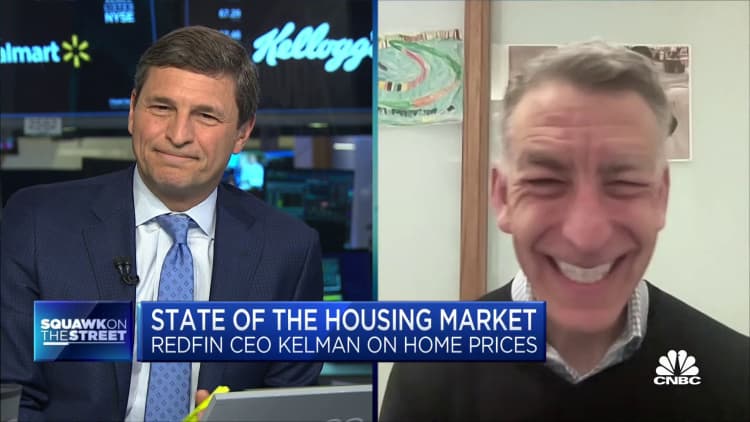How inflation is measured: 3 examples
1. Housing
Richard Newstead | Moment | Getty Images
Housing is perhaps the most consequential category in the consumer price index, a key inflation barometer.
Housing is the largest expense for an average U.S. household. The “shelter” category — which measures costs for renters and homeowners — therefore accounts for more than a third of the CPI weighting, the most of any category.
“Every single component [of the CPI] has some idiosyncratic measurement issue,” Zandi said. “But housing is particularly important. It drives a lot of the inflation train.”
Price changes in “shelter” were generally muted before the pandemic, economists said. But Covid-19 warped that dynamic: Housing costs shot up but have slowed and even started to fall in some areas, economists said.
Housing is particularly important. It drives a lot of the inflation train.
Mark Zandi
chief economist at Moody’s Analytics
Nationally, Americans saw rents grow by 5% in April from a year earlier, to about $2,018 a month on average nationally, according to Zillow Observed Rent Index data. That’s a significant slowdown from 17% growth during the prior year, from April 2021 to April 2022.
Here’s the problem: The CPI doesn’t capture those price trends in real time.
It operates with a substantial lag, meaning it can take six months to a year for a decline (or increase) in current housing prices to fully feed through to inflation data, economists said.
“It’s not necessarily a particularly accurate gauge of what’s going on in the housing market right now,” said Andrew Hunter, deputy chief U.S. economist at Capital Economics.
Here’s the reason for the lag: The U.S. Bureau of Labor Statistics collects rent data from sample households every six months. The BLS also divides these sample households into six different subgroups (called “panels”) and staggers when it collects data for each. Per the BLS, rents for Panel 1 are collected in January and July; Panel 2, in February and August, and so on.

That means it can take a year or so to collect data from all the subgroups.
Overall inflation is expected to slow sharply during the second half of the year as the CPI incorporates the housing price cooldown, economists said.
“It’s almost as much of a certainty as you can get, really,” Hunter said.
There’s an additional housing measurement quirk: The BLS tries to assess price changes for homeowners as well as renters, in a subcategory called “owners’ equivalent rent.”
The measure is essentially a survey that reflects the price homeowners believe they could get if they were to rent their home. While somewhat tied to market rents, homeowners aren’t necessarily feeling those inflationary pressures — especially those who own their homes or have a fixed mortgage, Zandi said.
2. Health insurance
Halfpoint Images | Moment | Getty Images
Health insurance prices have been falling by about 4% a month since October, according to CPI data.
Consumers’ out-of-pocket costs haven’t necessarily dropped, though.
For example, the average…
Read More: How inflation is measured: 3 examples
